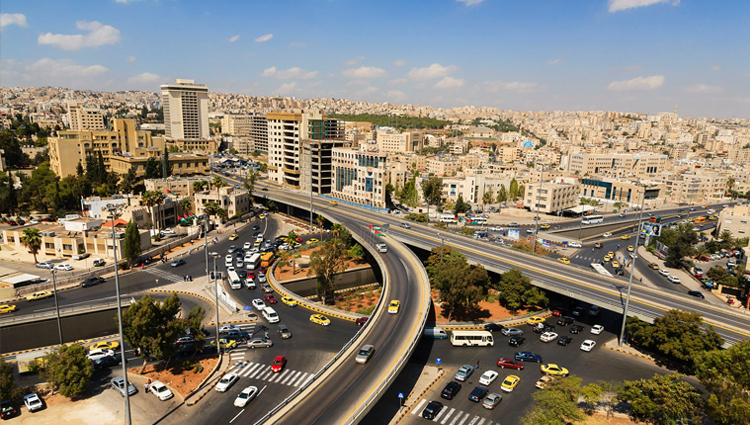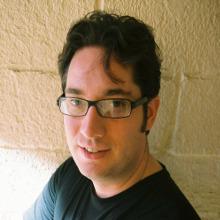Electrons for Peace: Major Scientific Facility in Middle East Nearing Completion

WASHINGTON, D.C. (ISNS) -- When President Obama makes his first live speech to the Arab world tomorrow in Egypt, the event will mark the beginning of a new phase in diplomatic efforts to reignite the Middle East peace process.
Meanwhile, on the hilltop campus of Al-Balqa Applied University outside Amman, Jordan, just a few hundred miles from where Obama will stand, an international project known as SESAME (Synchrotron-light for Experimental Science and Applications in the Middle East) is nearing completion. There, says Stanford University physicist Herman Winick, "The culture of science is taking root."
Even before it is finished, SESAME is achieving some of the highest goals of diplomacy. Its meetings are the only venue in the Middle East in which scientists from countries that have been at political odds in the past can come together and meet.
"International science projects can make profound contributions to diplomacy," U.S. Representative Rush Holt (D-NJ) said via email today. "Facilities can provide a gathering place for individuals from different nations to interact and work cooperatively toward common goals. This is especially true for laboratories like SESAME, where dozens of experiments can be carried out simultaneously."
Holt added that the United States should vigorously support projects like SESAME and explore creative new ways of integrating science into our diplomatic portfolio.
SESAME has nine members (Bahrain, Cyprus, Egypt, Israel, Iran, Jordan, Pakistan, Palestinian Authority, and Turkey), and membership is pending for Iraq. The project also includes several "observer" countries: France, Greece, Germany, Italy, Japan, Kuwait, the Russian Federation, Sweden, the United Kingdom, and the United States.
When it becomes operational, says Winick, countries in the Middle East will be able to train graduate students in the physical and biological sciences without having to send them abroad. He predicts that it may also slow or reverse the brain drain by bringing home mid-career scientists currently working abroad.
"It's a tremendous project from many points of view," says Christopher Llewellyn-Smith, president of the SESAME Council. "This is not the best facility in the world, but it can do world-class science," he adds. "With the right idea, you could get a Nobel Prize with it."
Synchrotrons are massive scientific instruments that accelerate electrons around a ring, using powerful magnets to steer them. Each time a magnet bends the path of a stream of electrons, those electrons radiate powerful X-rays, infrared rays, and other beams of light, which are useful for probing the properties of materials.
There are about 60 synchrotrons in operation and more under construction worldwide. These instruments have helped scientists to design ceramic coatings for jet engines, study pottery from ancient cultures, solve the structures of life's intricate molecular machines, detect forged documents, study works of art, and investigate sources of pollution in air and water supplies.
The Origins of SESAME
The SESAME project's roots go back to the Cold War, when the BESSY I synchrotron was constructed in West Berlin in the early 1980s. BESSY I was the first of its kind, but 15 years later, a bigger, more powerful instrument called BESSY 2 was designed to replace it. Stanford's Winick sat on a committee to review the design and progress of BESSY 2. He asked what would happen to BESSY 1 after BESSY 2 came into operation.
"They were going to call a junkyard dealer and cut it up into little pieces," Winick recalls. He hatched a radical idea with his old colleague Gustaf-Adolf Voss of Deutsches Elktronen-Synchrotron in Germany, another committee member. Why not upgrade it to make a much more powerful synchrotron and donate it to the Middle East?
Together Winick and Voss began advocating the idea to other scientists who were interested in promoting science in the Middle East. The plan was also brought to the attention of Federico Mayor, then Director-General of United Nations Educational, Scientific, and Cultural Organization (UNESCO).
Mayor called a meeting at the UNESCO's headquarters in Paris in June 1999 to discuss the idea with delegates from the Middle East and other regions. The German government agreed to donate BESSY I, and the money needed to transport it was raised from several of the interested countries, including the United States. UNESCO kicked in $400,000 after its general council of 188 countries approved SESAME in 2001, and the European Union has allocated more than 1.2 million euros to the project.
In a competition among seven Middle Eastern Countries, UNESCO officials selected Jordan as the site of the project, and the king of Jordan paid for the construction of the building, which opened last year. BESSY I is now being installed, and millions of dollars of donated equipment has arrived from laboratories in California, France, Switzerland, and the United Kingdom.
"The world's synchrotron labs have been falling over backwards to help us," says Llewellyn-Smith, "because of the science for peace aspect."
Training Future Scientists in the Middle East
Besides donating equipment, the physics community has also supported SESAME by sponsoring the training of scientists who will be its eventual users. The International Atomic Energy Agency has also donated significant funds for this. "SESAME lacks training funds, so we are dependent on [these funds]," says Javad Rahighi, a physicist at the Institute of Nuclear Sciences in Iran who chairs SESAME's training committee.
In the last few years, Rahighi and his colleagues have organized workshops and meetings and have partnered with laboratories to send scientists from the Middle East to existing synchrotrons in Europe, Asia, and America for training. More than 150 scientists have gone for short stints of five to six weeks and some 30 have been awarded fellowships that paid for them to stay in residence in a foreign synchrotron lab for up to a year at a time. Such fellowships are important, says Rahighi. "When the machine is built and operational, then we will need users to take advantage it."
Llewellyn-Smith concedes that there is a long way to go. Although SESAME is being built for considerably less than the $100 million he estimates it would cost to build in Europe, another $10-20 million is needed to complete the initial construction of the project.
Part of the reason for the funding shortfall is that the scope of SESAME has grown considerably in the last decade. The original BESSY I was a powerful instrument in its day, but SESAME was designed to be even more powerful by using BESSY I as an injector to feed electrons into a larger ring where they would be accelerated further. This larger, more powerful ring is much more expensive and is still being constructed.
"It was not part of the plan," says Llewellyn-Smith. "Nobody had budgeted for it."
Still, says Rahighi, the Iranian scientist who chairs the training committee, people are gradually starting to understand the importance of synchrotron light and its uses. He measures the success in terms of the workshops they organize in the countries that are SESAME members. At the beginning of the decade, there were very few scientists interested in attending these workshops.
"Now," he says, "the problem is how to select the best people out of the huge number of applicants."

